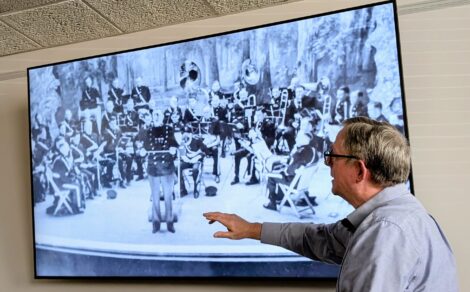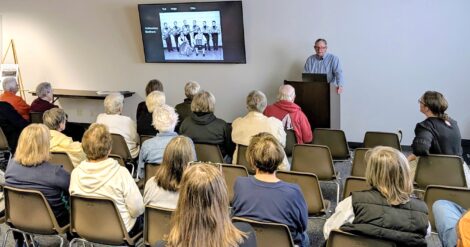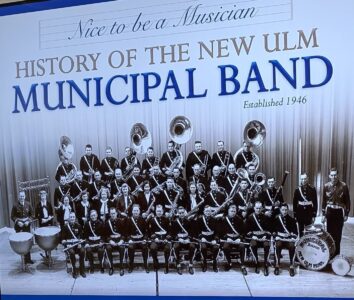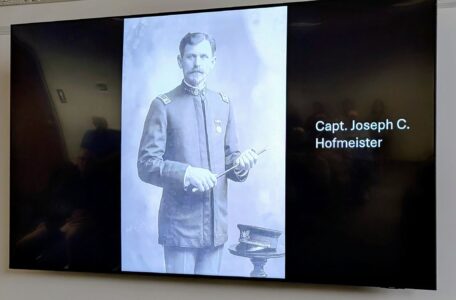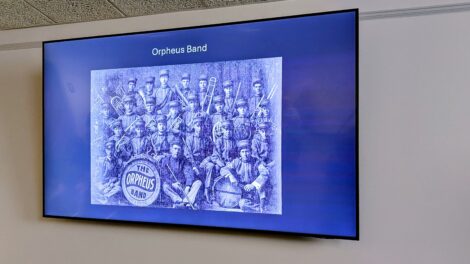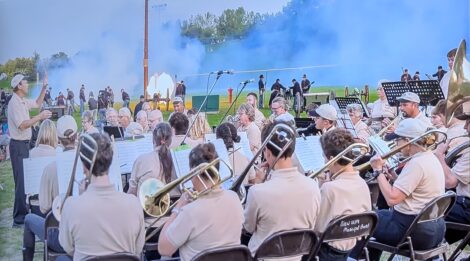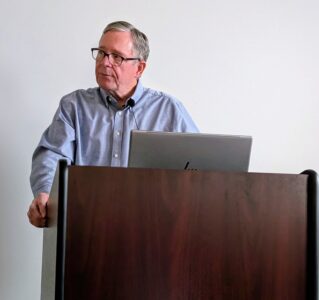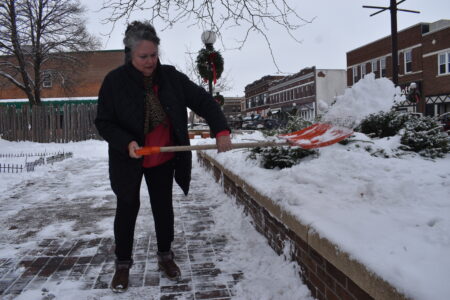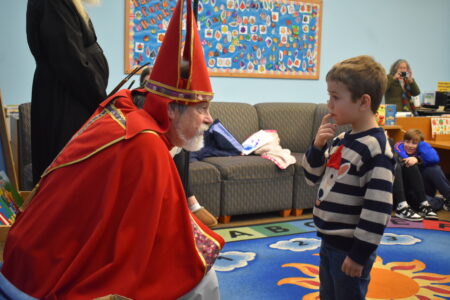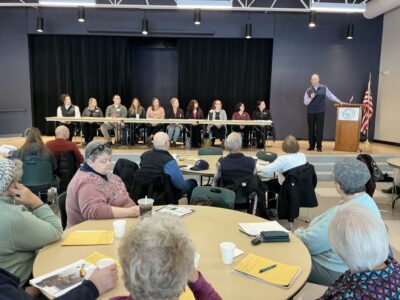Musical notes on Brown Co. history
Tracing the history of Brown County’s community bands
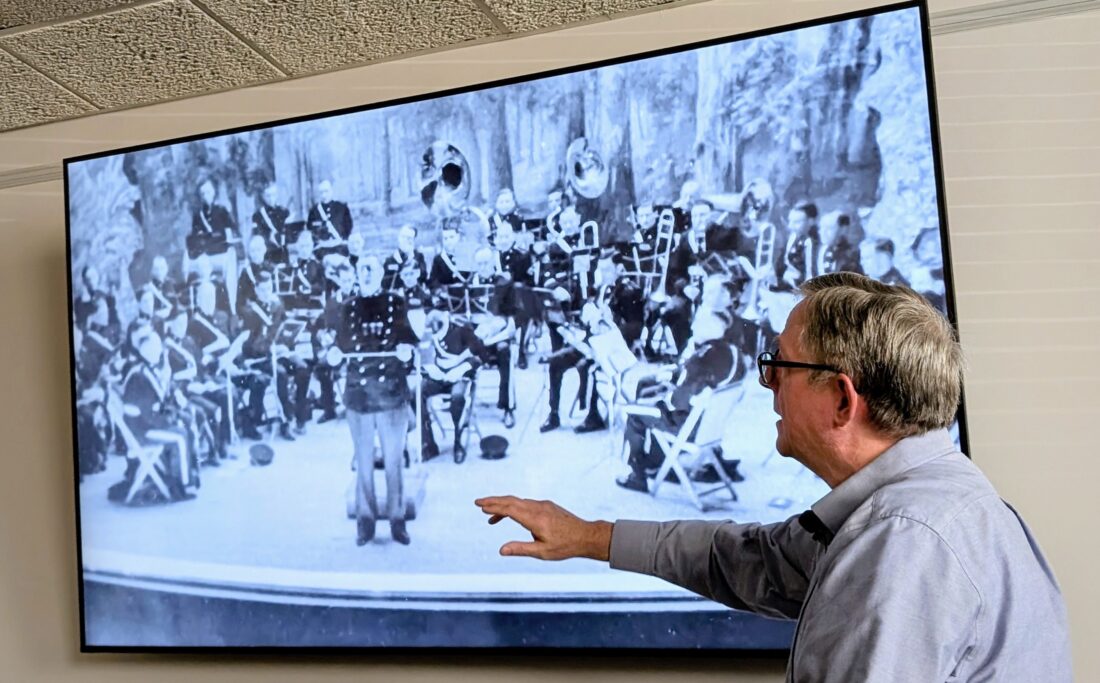
Carl L. King was a guest conductor at a Turner Hall concert on March 30, 1941, for the Pioneer Band’s first concert. King was the leader of the municipal band in Fort Dodge, Iowa, and consulted on forming the New Ulm Municipal Band in 1946. Photo by Amy Zents
NEW ULM — Dan Groebner, a retired physician and local history researcher, presented “Community Bands of Brown County” at the Brown County Historical Society’s “Lunch and a Bite of History” series Thursday.
Groebner, who plays baritone with the New Ulm Municipal Band, explored the musical legacy of ensembles across Brown County, including bands from Sleepy Eye, Springfield, Hanska and Comfrey.
“Community bands not only entertained, they served their towns,” Groebner said. He described how bands performed at parades, festivals, memorial services and civic celebrations, often organized by townships or civic groups. These ensembles were central to public life, offering both cultural enrichment and civic service.
Groebner highlighted key figures in the county’s musical history. Capt. Joseph C. Hofmeister, an immigrant from Bohemia, led the Hofmeister Band in New Ulm and later directed Springfield’s Orpheus Band starting in 1923. He also conducted the Second Regiment Band of the Minnesota National Guard and composed original works, including the “Minnesota Centennial March.”
The Hofmeister family was inducted into the Minnesota Music Hall of Fame for its contributions to regional music.
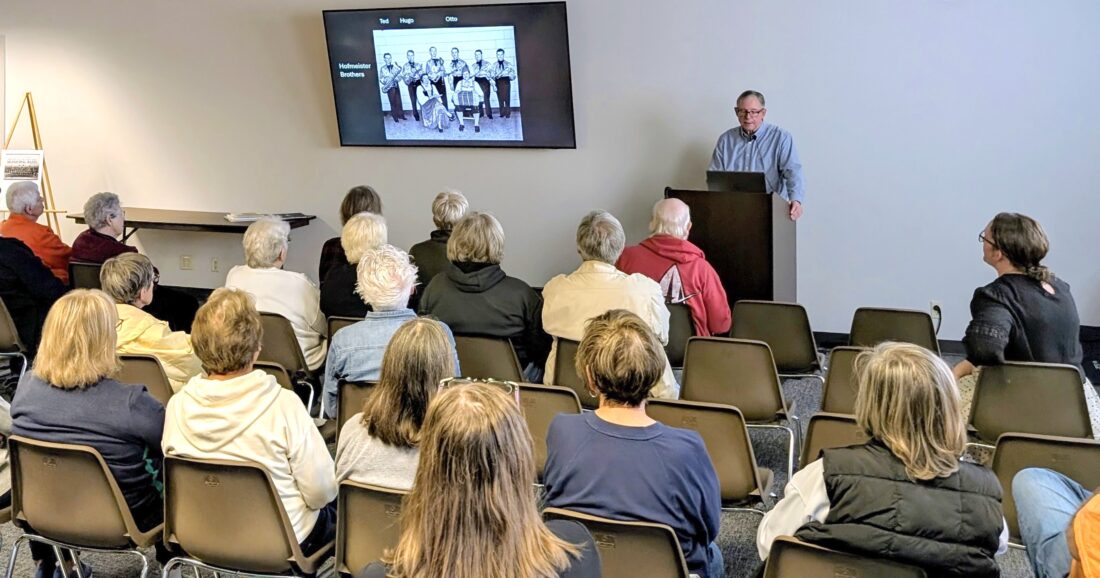
Dan Groebner presents on Brown County's community band history Thursday at the Brown County Historical Society. Photo by Amy Zents
Hofmeister, born in Bohemia in 1866, immigrated directly to New Ulm and became perhaps the most accomplished musician in the area’s history. He taught all of his sons to become professional musicians. Several Hofmeister sons — including Ted, Hugo, Otto and Frank — later played in Whoopee John Wilfahrt’s band.
Another leader discussed was Leo B. Schroepfer, nicknamed “Pinky,” who directed the Sleepy Eye Drum and Bugle Corps starting in 1935. The American Legion Post 7 group won first place in competitions across Minnesota, Chicago and St. Louis more than 20 times between 1928 and 1970. Schroepfer, a barber and accomplished musician, also composed works including the “Jubilesta March” and was inducted into the Minnesota Music Hall of Fame.
Groebner showed archival photographs of band uniforms and instruments, noting that cornets were common in early ensembles before trumpets gained popularity in the 20th century following Louis Armstrong’s influence.
The presentation addressed the inclusion of women in local bands. Groebner noted that women were largely absent until after World War II.
“The New Ulm Municipal Band was the first local band to include women,” he said. Today, the band’s membership is roughly half men and half women. Sue Sellner became the first woman director of the group.
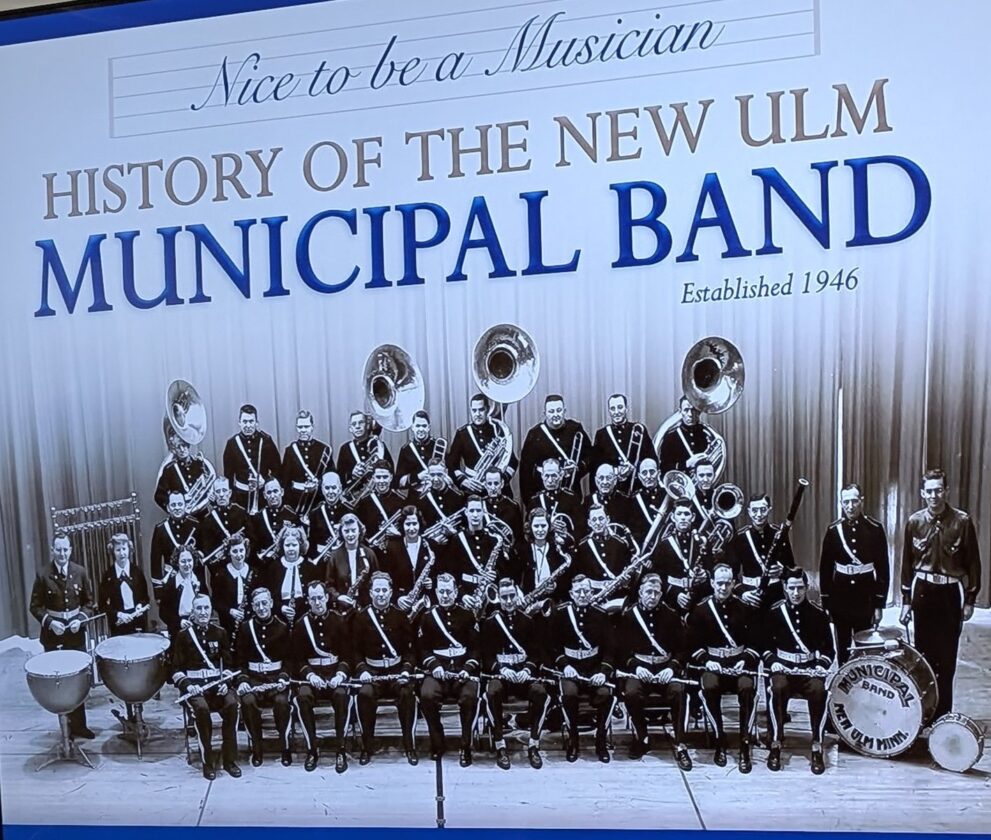
Dan Groebner’s presentation featured the cover of his upcoming book “Nice to Be a Musician: History of the New Ulm Municipal Band,” which chronicles the band established in 1946. The book is set for release in March or April 2026.
Groebner described ongoing traditions of the New Ulm Municipal Band, which continues to perform free concerts in parks, at local festivals such as Bavarian Blast and HermannFest, and for Memorial Day services. The band often performs alongside the New Ulm Battery, a local artillery unit that provides cannon fire during pieces like Tchaikovsky’s “1812 Overture.”
New Ulm is believed to be the only community in the country to use cannons rather than rifles for Memorial Day military salutes. During one memorable performance of the “1812 Overture,” six churches rang their bells while the band played and the battery fired cannons.
Military bands such as the Second Regiment Band and the 205th Infantry Band contributed to both entertainment and morale during training encampments and public events. During World War II, eligible musicians from the 205th Infantry Band became part of the 215th Coastal Artillery Band. Those ineligible for service reactivated the Pioneer Band in 1941.
A guest conductor at the Pioneer Band’s first concert at Turner Hall on March 30, 1941, was Carl L. King, one of the most famous bandmasters of the first half of the 20th century. King, who led the municipal band in Fort Dodge, Iowa, later consulted on forming the New Ulm Municipal Band in 1946.
Groebner emphasized that nearly every township in Brown County once had its own band. His research will culminate in a book titled “Nice to Be a Musician: History of the New Ulm Municipal Band,” set for release in spring 2026. Attendees could pre-order copies to help defray printing costs.
- Carl L. King was a guest conductor at a Turner Hall concert on March 30, 1941, for the Pioneer Band’s first concert. King was the leader of the municipal band in Fort Dodge, Iowa, and consulted on forming the New Ulm Municipal Band in 1946. Photo by Amy Zents
- Dan Groebner presents on Brown County’s community band history Thursday at the Brown County Historical Society. Photo by Amy Zents
- Dan Groebner’s presentation featured the cover of his upcoming book “Nice to Be a Musician: History of the New Ulm Municipal Band,” which chronicles the band established in 1946. The book is set for release in March or April 2026.
- A portrait of Capt. Joseph C. Hofmeister in his military uniform
- The Orpheus Band historical photograph on the presentation screen
- The New Ulm Municipal Band performs alongside the New Ulm Battery which provides cannon fire during pieces like Tchaikovsky’s “1812 overture.” New Ulm believed to be the only community in the country to use cannons rather than rifles for Memorial Day military salutes.
- Dan Groebner presents on Brown County’s community band history Thursday at the Brown County Historical Society. Photo by Amy Zents
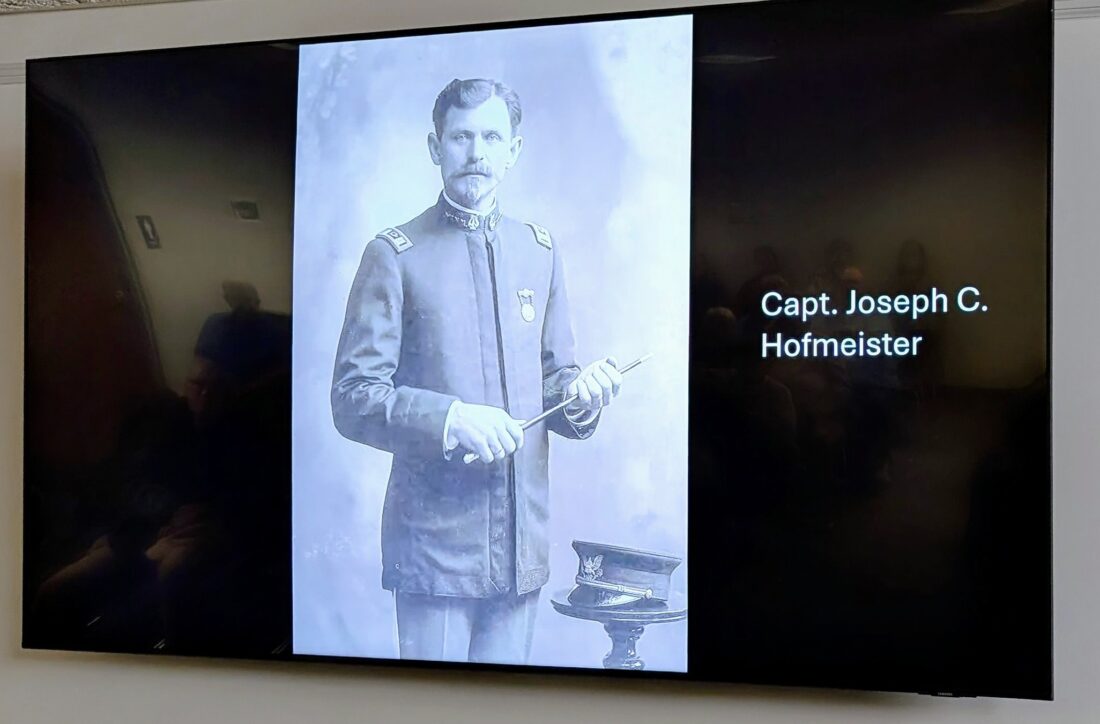
A portrait of Capt. Joseph C. Hofmeister in his military uniform
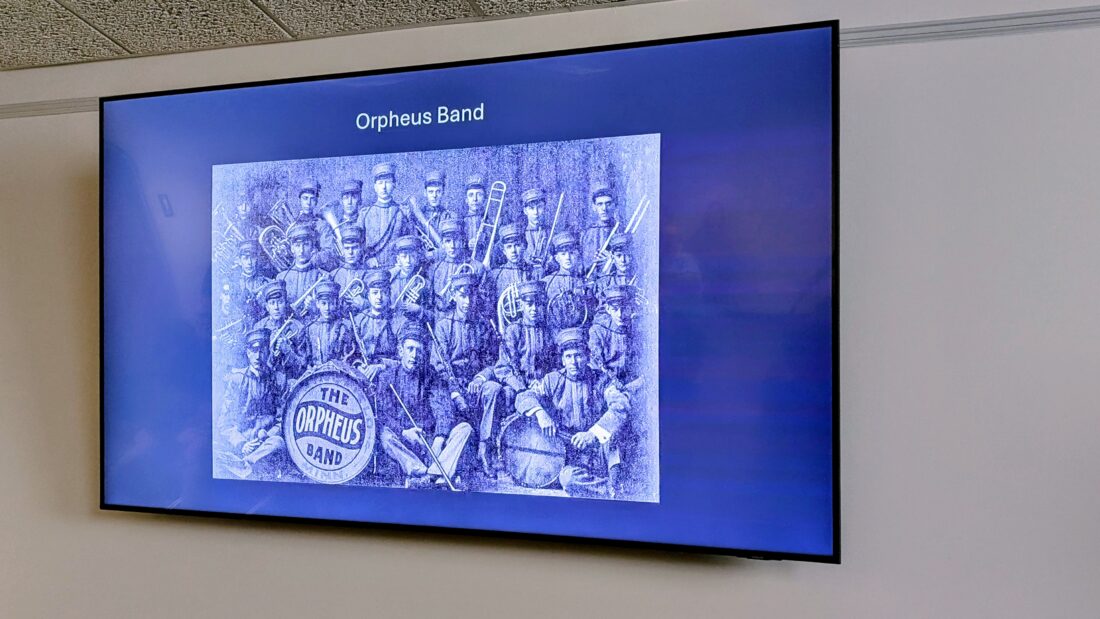
The Orpheus Band historical photograph on the presentation screen
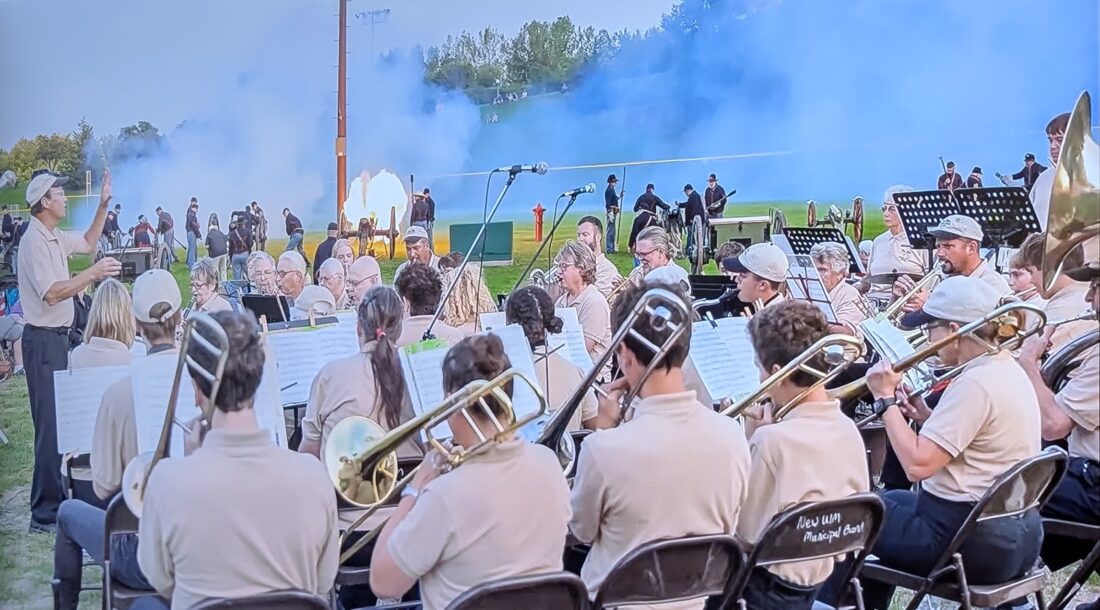
The New Ulm Municipal Band performs alongside the New Ulm Battery which provides cannon fire during pieces like Tchaikovsky's "1812 overture." New Ulm believed to be the only community in the country to use cannons rather than rifles for Memorial Day military salutes.

Dan Groebner presents on Brown County's community band history Thursday at the Brown County Historical Society. Photo by Amy Zents

